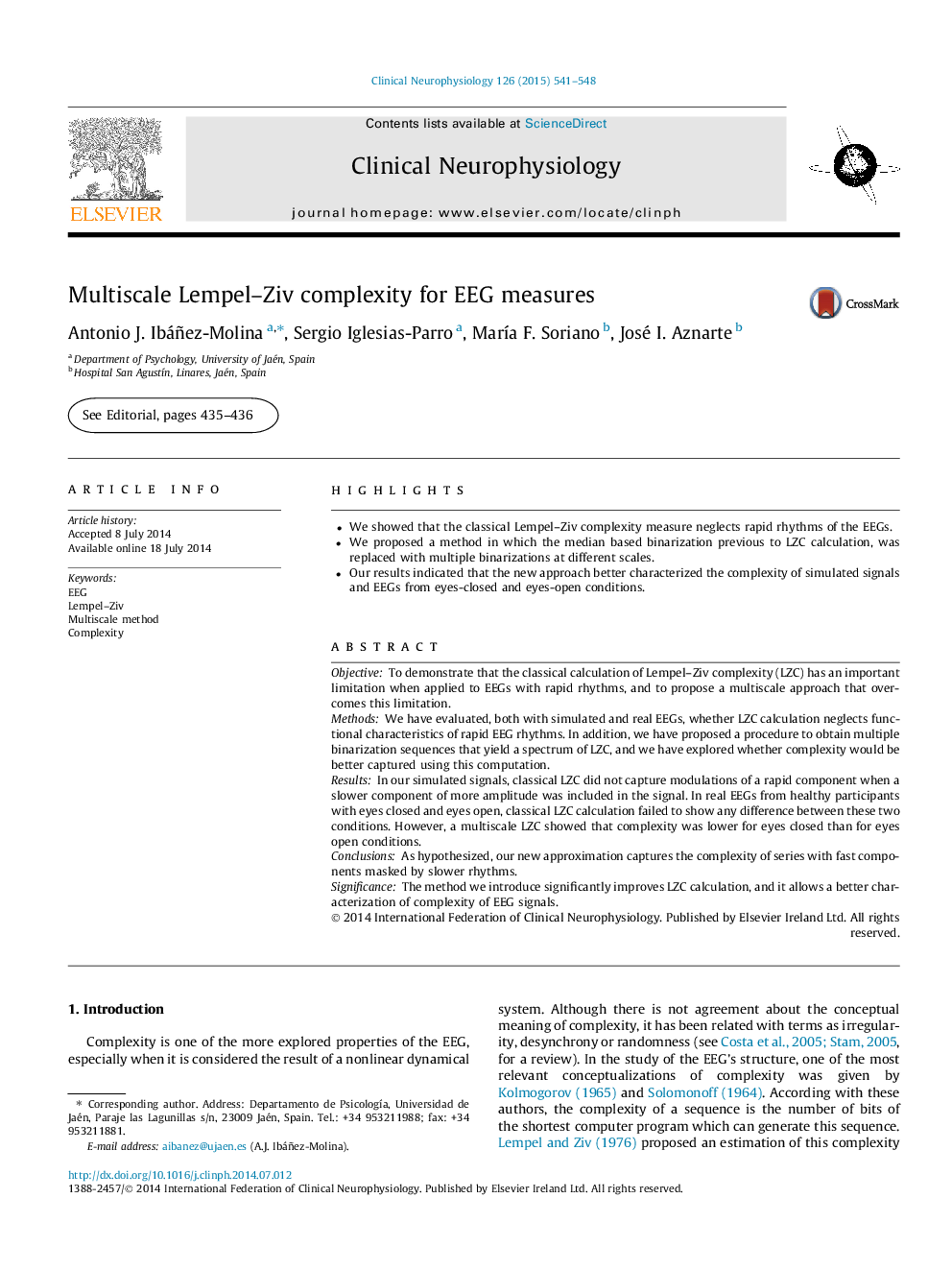| Article ID | Journal | Published Year | Pages | File Type |
|---|---|---|---|---|
| 3043714 | Clinical Neurophysiology | 2015 | 8 Pages |
•We showed that the classical Lempel–Ziv complexity measure neglects rapid rhythms of the EEGs.•We proposed a method in which the median based binarization previous to LZC calculation, was replaced with multiple binarizations at different scales.•Our results indicated that the new approach better characterized the complexity of simulated signals and EEGs from eyes-closed and eyes-open conditions.
ObjectiveTo demonstrate that the classical calculation of Lempel–Ziv complexity (LZC) has an important limitation when applied to EEGs with rapid rhythms, and to propose a multiscale approach that overcomes this limitation.MethodsWe have evaluated, both with simulated and real EEGs, whether LZC calculation neglects functional characteristics of rapid EEG rhythms. In addition, we have proposed a procedure to obtain multiple binarization sequences that yield a spectrum of LZC, and we have explored whether complexity would be better captured using this computation.ResultsIn our simulated signals, classical LZC did not capture modulations of a rapid component when a slower component of more amplitude was included in the signal. In real EEGs from healthy participants with eyes closed and eyes open, classical LZC calculation failed to show any difference between these two conditions. However, a multiscale LZC showed that complexity was lower for eyes closed than for eyes open conditions.ConclusionsAs hypothesized, our new approximation captures the complexity of series with fast components masked by slower rhythms.SignificanceThe method we introduce significantly improves LZC calculation, and it allows a better characterization of complexity of EEG signals.
